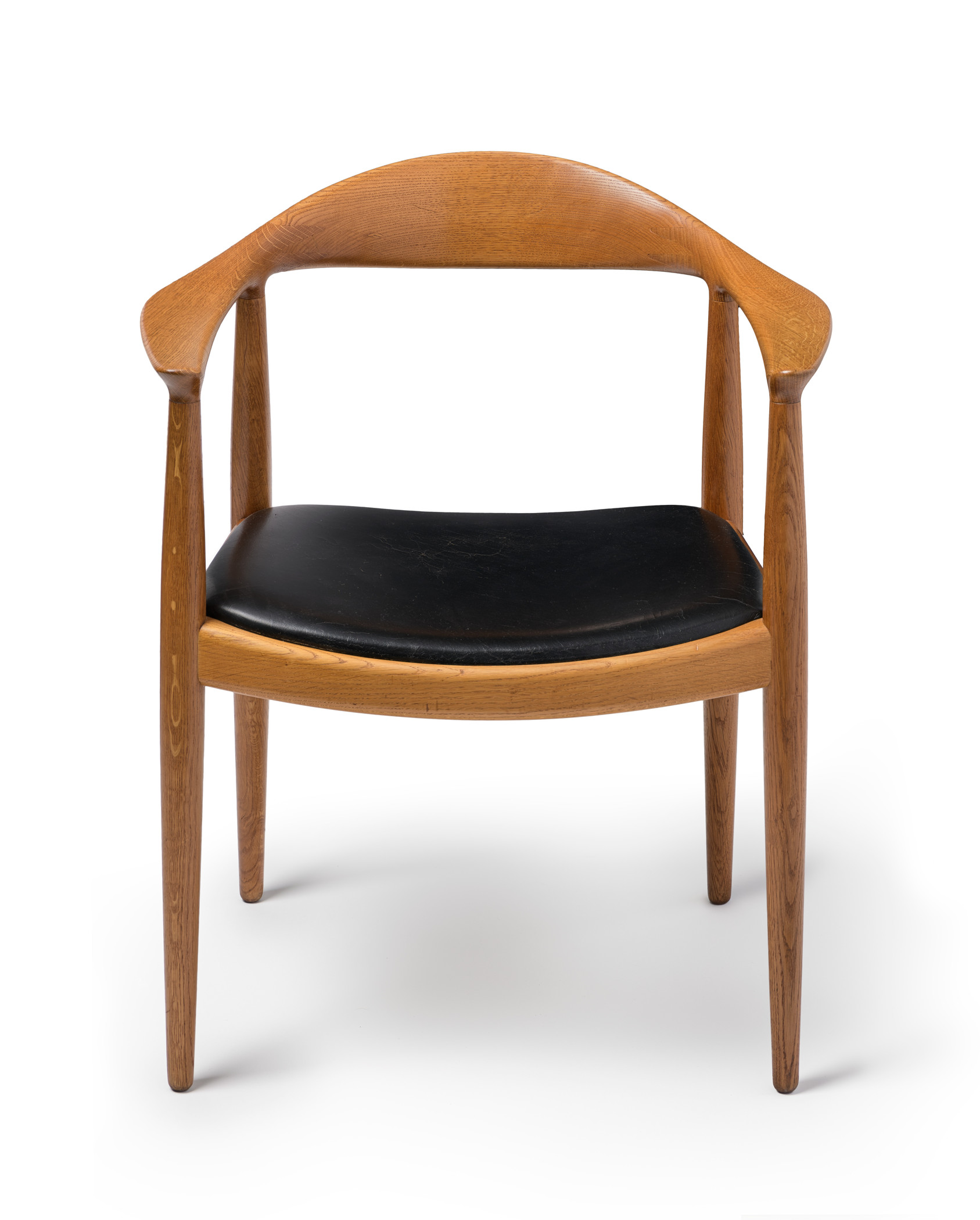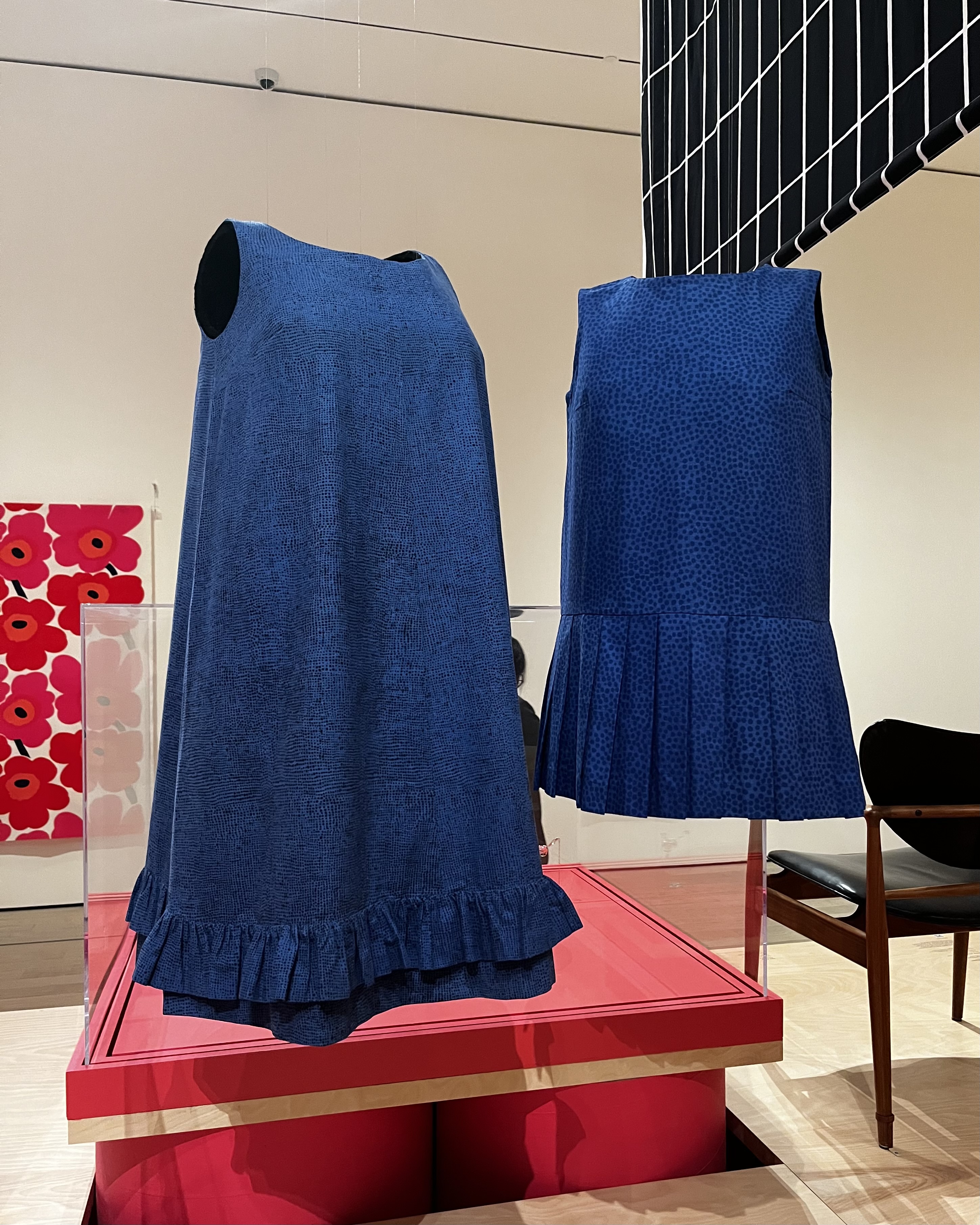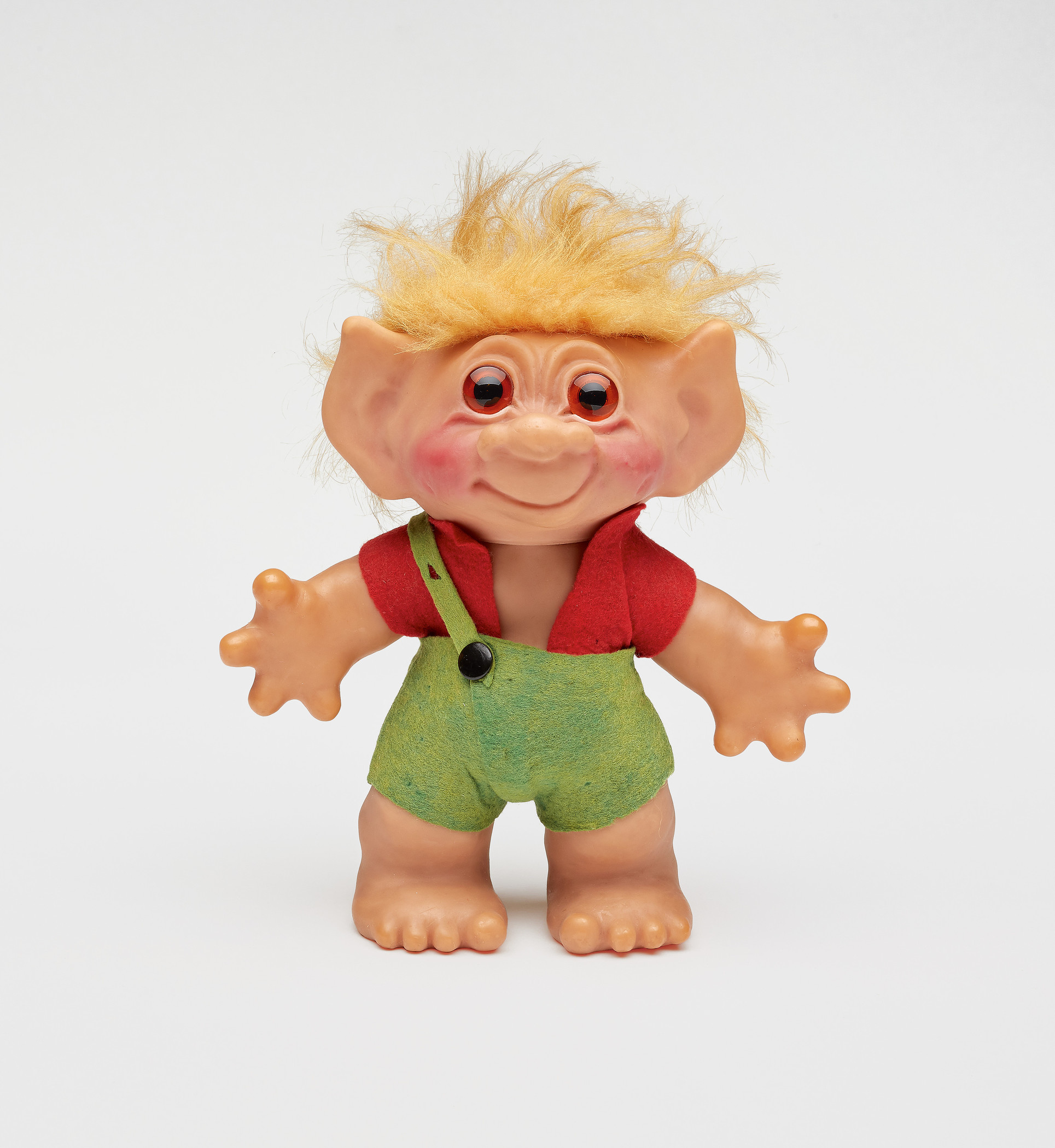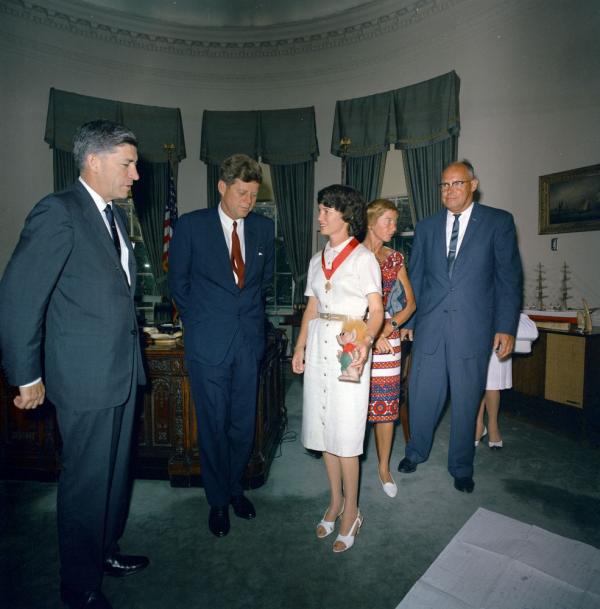Now that many of us headed to the ballot box last week on Election Day, we’re highlighting some ways that elected U.S. officials have engaged with Scandinavian design in conjunction with the exhibition Scandinavian Design and the United States, 1890–1980, now on view.

In 1938 and 1939, the royal families of Denmark, Sweden, and Norway each visited President Franklin Delano Roosevelt. The nominal reason for their visits was the opening of the New York World’s Fair in 1939, for which each of the countries had their own pavilions. But the encroaching war was perhaps a more significant motivation for ensuring favorable diplomatic relations. Each royal family gave the President a gift in a material associated with their own country—Orrefors glass from Sweden, exquisite enamel from Norway, and Georg Jensen silver from Denmark. These diplomatic gifts demonstrate how design could be employed for overtly political purposes.

President John F. Kennedy looms large in the exhibition, as his presidency (1961–63) coincided with a big heyday of Scandinavian design in the United States. Candidate Kennedy participated in the first televised presidential debate against his opponent, Vice President Richard Nixon, in September 1960. Danish designer Hans Wegner’s “The Chair” was selected as the seat for the debaters and reflects how icons of Scandinavian design had transcended their specific geographic associations and came to represent a generalized modernism appropriate for this watershed moment. Was Kennedy’s debate success and perceived youthful demeanor enhanced by the modern chair he sat in? Historians haven’t agreed, but the chair itself came to represent a tasteful and acceptable version of modernism. When it was time to furnish the boardroom of the newly constructed Los Angeles County Museum of Art at our current location in Hancock Park in 1965, the interior designers selected the same Wegner chair. A savvy curator scooped up one of those boardroom chairs 20 years later and accessioned it into LACMA’s permanent collection, so the chair in the exhibition has both national and local significance.

While on the campaign trail, Kennedy’s wife Jackie wore dresses by the Finnish clothing brand Marimekko, which she had bought at the shop Design Research near their home in Cambridge, Massachusetts. When she appeared in one of those dresses on the cover of Sports Illustrated, the brand’s reputation took off, attesting to the power of publications and Jackie’s personal charisma to influence public taste.

A few years later President Kennedy received a visit from the Los Angeles pilot Betty Miller, who had been bestowed a Decoration for Exceptional Service from the Federal Aviation Administration as the first woman to complete a solo trans-Pacific flight. (Read her story here.) She was accompanied on that journey by the Danish good luck troll named Dammit. When Betty Miller went to the White House to receive her award from President Kennedy (see photo at top), she brought Dammit along with her, making this perhaps the first and only troll doll to meet a sitting president.

Visit Scandinavian Design and the United States, 1890–1980, on view through February 5, 2023, to see these and more objects that consider how design was used in both acts of political diplomacy and the soft power of cultural propaganda.



